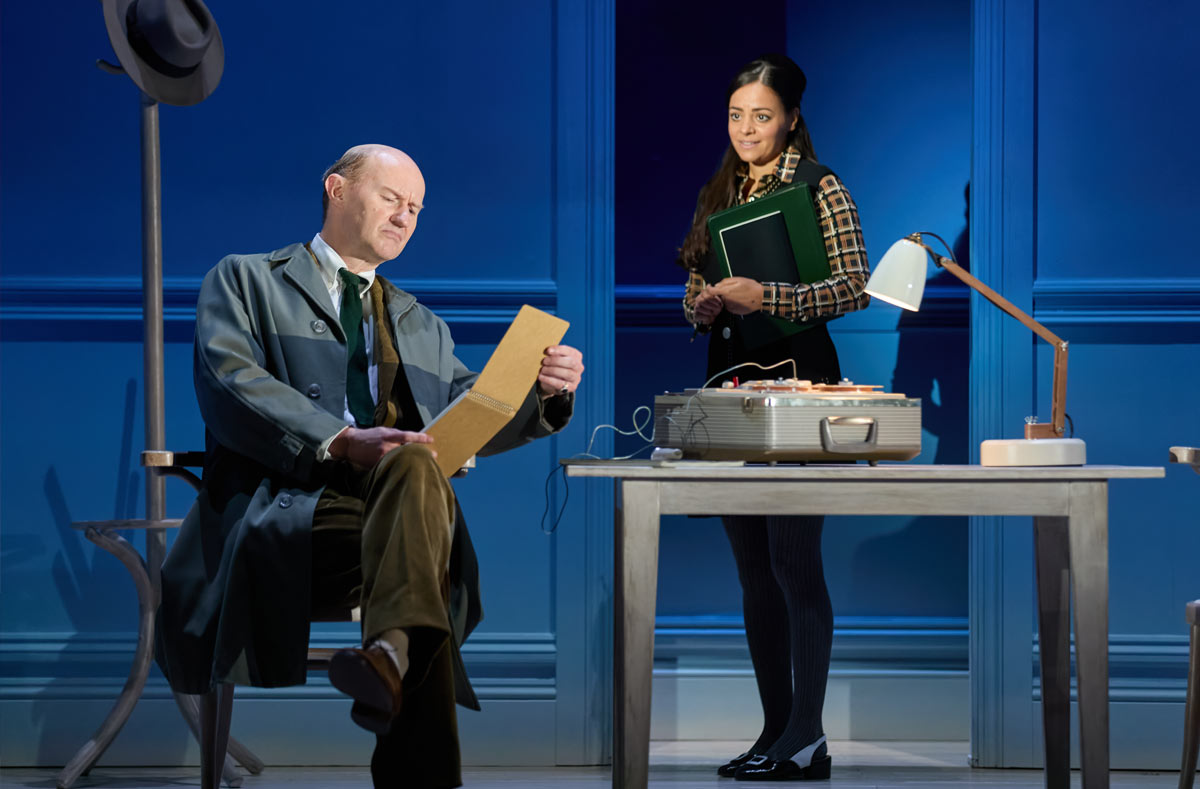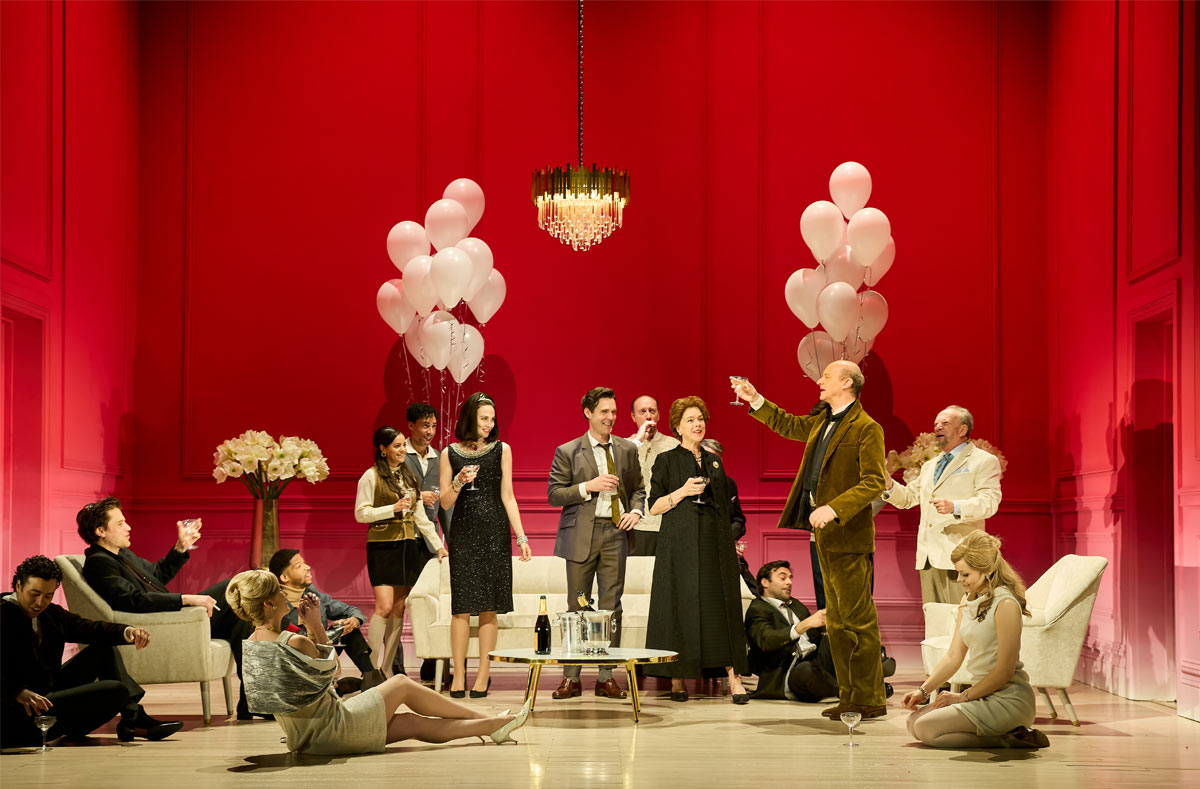Jack Thorne’s new drama is drawn from various sources including letters and diary entries written by Gielgud, but the foundations and indeed the trigger for the play, here directed by Sam Mendes, were books written by two lesser cast members of the Broadway production, who witnessed first hand the trials and tribulations, confrontations and disagreements between director and star. Richard L Sterne’s John Gielgud Directs Richard Burton Playing Hamlet: A Journal of Rehearsals, may lack imagination in its title, but is full of the raw antagonism which feeds Thorne’s script. Similarly William Renfield’s Letters from an Actor adds layers without which the playwright could only have guessed at the alcohol-infused confrontations and patronisingly delivered politesse which ultimately spawned the longest running Hamlet in Broadway’s history.
Letterboxing each scene Es Devlin has created the bleached ivory rehearsal room set which on closing, enables key actors to play scene snippets in front of the mask (allowing for impressively fast set changes behind). When the shutters reopen in a different lighting state (courtesy of Jon Clark), the blousy red expanse of the opulent Burton-Taylor New York apartment is juxtaposed with later scenes showing the much diminished (as in life) blue square of Gielgud‘s more modest living quarters.
Of the theatrical combatants, Gatiss succeeds in delivering much of Gielgud’s physical manner and vocal penchant for ethereal prose mixed with witty (and vulgar) asides. Flynn — all brooding bonhomie steeped with an alcoholic’s sudden anger — frequently lands Burton’s poisonous rasp which so powerfully enlivened characters like George in Who’s Afraid of Virginia Woolf?
The play’s title, taken from Hamlet’s soliloquy “O, what a rogue and peasant slave am I” — is delivered as the Prince ponders his own reticence to act and considers the passions required to trigger and spur him on to decide how to respond to the situation with which he is faced. Thorne uses it to finally bring understanding between the two men as they find in Burton’s sad early life the means for him to make sense of the mental turmoil required to delivery Shakespeare’s most oft-performed character.
In amongst the rehearsal scenes, there are some nice nods to Elizabeth Taylor‘s efforts (over afternoon tea) to broker peace, love and understanding, and a tragically touching scene in which Gielgud — who had been arrested at a Chelsea public lavatory in 1953 and charged with persistently importuning male persons for immoral purposes — invites a male prostitute back to his apartment where they do little more than talk and tears are shed during a hug. There’s sufficient wryly-delivered humour (including excerpts of Noel Coward songs played at the start of each half) to appeal to the lovers of Gielgud’s era whilst Burton’s representation of a rich and successful (but still angry and emotionally unsettled) young man, ticks the box for 60s kitchen sink angst. Expect a brace of acting gong nominations, come awards season.
 Mark Gatiss (Sir John Gielgud) and Aysha Kala (Jessica Levy) in The Motive and the Cue at the National Theatre. Photo by Mark Douet
Mark Gatiss (Sir John Gielgud) and Aysha Kala (Jessica Levy) in The Motive and the Cue at the National Theatre. Photo by Mark Douet

 The Motive and the Cue cast at the National Theatre. Photo by Mark Douet.
The Motive and the Cue cast at the National Theatre. Photo by Mark Douet.

